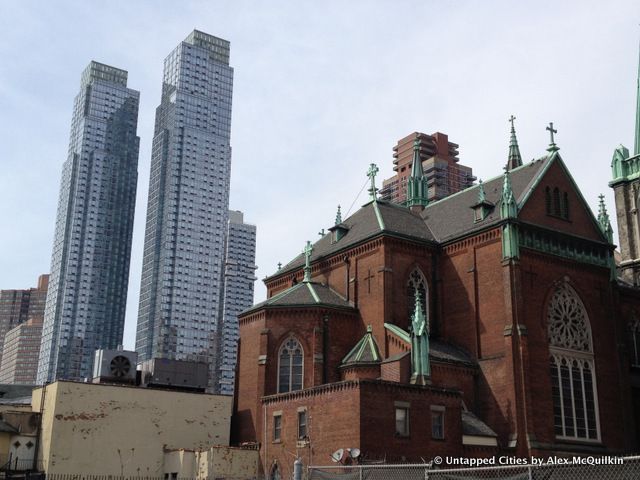NYC’s Forgotten ‘War on Christmas Trees’
Discover how an obscure holiday crackdown affects festive street vendors today!


Zoning is a city planning instrument that few of us know much about or care to pay attention to. But perhaps we should. Between 2002 and 2013, former mayor Michael Bloomberg and his Planning Commission chairwoman Amanda Burden together spearheaded the rezoning of nearly 40% of the city’s land area. Some of the most high-profile were the rezonings of the Greenpoint-Williamsburg waterfront, Jamaica in Queens and Hudson Yards on Manhattan’s West Side. Amanda Burden has said that in today’s development era, “zoning is the most powerful tool in the planner’s toolbox.”
In 2008, the New York City Council voted 47 to 2 to rezone the 125th Street corridor in Harlem, long the city’s center of black culture and commerce. But despite promises of affordable housing, a 19-story height limit and dedicated space for arts groups, Harlem residents were more split on the issue. Some feared new residential towers would displace existing businesses. Others were suspicious about a provision allowing developers to build the mandatory affordable housing component outside of the 125th Street district. Some of these concerns were more grounded than others, but nevertheless, there was a clear disconnect between the intentions of City Hall and the understanding of the neighborhood they were impacting.
Last year, the Center for Urban Pedagogy decided to create a zoning toolbox of its own. CUP is dedicated to increasing the public’s understanding of urban policymakers’ jargon and labyrinthine public engagement procedures. They created the “What is Zoning?” toolkit and guidebook to help educators, neighborhood groups and community boards to shed light on the New York City zoning process for their constituents. In it, we learn that zoning was introduced in New York City in 1916 by a group of building owners concerned about the hulking mass of the new 38-story Equitable Building in Lower Manhattan. And that Coney Island is the only part of the city zoned “C7,” for amusement parks.
The kit also includes a number of games that invite groups to work through zoning exercises in miniature. In one, participants stack blocks on a board to resemble buildings going up in a neighborhood. “Would you like to live next to an asphalt plant?” it asks. Participants might be surprised to learn that New York City zoning code looks, at first glance, a lot like SimCity zoning: one zone for residential, one for commercial, and one for industry. SimCity has been criticized for not allowing the kind of mixed-use districts a lot of people find so stimulating in cities. But New York City code doesn’t have that down pat either. According to the guide, mixed-use districts – where residential and commercial uses are introduced into traditionally industrial areas – are relative newcomers to the zoning guidelines, and exist in only a handful of places, like DUMBO, Red Hook and Greenpoint/Williamsburg.

In another game, participants are asked to lay down key city infrastructure like a seaport, airport and garbage dump, and then told to start adding manufacturing and residential buildings. “Why did you choose to build residential in those places?” SimCity veterans would know that property values decline and crime spikes when noxious uses are located within close proximity of residential neighborhoods.
In a game called “Zoning the Block,” participants are taught about floor area ratio (FAR), or the ratio of a building’s total floor area to the area of the lot it sits on. So a one-story building spread across its entire lot will have the same FAR as a two-story building that occupies just half of its lot. The game gets more complicated as players are told to introduce maximum lot coverage, minimum setback requirements, and height limits for both the street wall and the building’s tallest point. We’re told that these requirements were introduced to maximize exposure to sunlight and provide emergency egress, but by now, everyone’s block buildings will look essentially the same.
The guide reminds us that most of New York City was developed before zoning laws were first introduced in 1916. So zoning doesn’t change the existing building stock, it merely shapes what’s allowable moving forward. And readers are encouraged to think of zoning laws as something that they can actually help change – by creating a 197-a plan, which gives the city an idea of how a neighborhood wants to develop, or by responding to the Environmental Impact Statement that is a necessary accompaniment to any rezoning. CUP’s kit might not have changed all minds in the Harlem rezoning debacle, but at least it might have minted some new zoning experts. Besides, 19 stories doesn’t look all that bad in a blue and yellow stack of Legos.
Subscribe to our newsletter